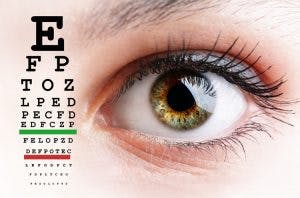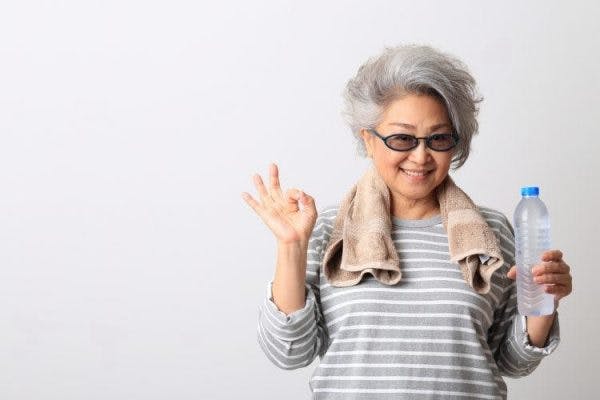Uncontrollable emotional outbursts are common after stroke and are often attributed to a condition known as pseudobulbar affect. This secondary effect of stroke leads to extreme emotional reactions that may be inappropriate to the situation or context. For example, you might start sobbing uncontrollably when you are only mildly sad about something. Another example includes laughing at situations that are not necessarily funny.
Pseudobulbar affect can be distressing or frustrating for stroke survivors. Thankfully, there are some options available to survivors to help address this secondary effect. To help you understand this condition, we will discuss the causes and symptoms of pseudobulbar affect. Then, we will review the various treatments available for survivors who experience pseudobulbar affect. Different people will react differently to treatment, so it’s important to understand all your treatment options before you begin.
Causes of Pseudobulbar Affect
Pseudobulbar affect (PBA), also known as emotional lability, occurs after injury to areas of the brain that regulate emotions. This can take place due to stroke, traumatic brain injury, or other neurological conditions.
The mechanism behind PBA is still not fully understood but is related to the disruption of emotional pathways in the brain. One brain area called the cerebellum is now thought to play a much larger role in pseudobulbar affect than formerly suggested. Additionally, while scientists are still divided regarding which areas of the brain control emotion, the limbic system is thought to be largely involved. This includes brain areas such as the hypothalamus, hippocampus, and amygdala.
If a stroke impacts any of these areas, this can result in emotional disturbances like pseudobulbar affect. Survivors should take care to remember that every stroke is different and every brain is wired uniquely. This means that pseudobulbar affect is not limited to strokes within the limbic system or cerebellum.
Survivors should ask their medical team about the location of their stroke. By doing this, you can better understand your specific symptoms and why you may be experiencing secondary effects such as PBA. Before we dive into treatment options available for pseudobulbar affect, let’s discuss common symptoms of this condition.
Symptoms of Pseudobulbar Affect
The hallmark symptom of pseudobulbar affect is random, uncontrollable emotional outbursts such as laughter or crying. Often, these emotions are exaggerated responses to something the person already feels. Sometimes, however, the emotions might not reflect the person’s true feelings.
For example, a stroke survivor with pseudobulbar affect might find themselves laughing hysterically in a normal situation. Similarly, the survivor might start sobbing even when they aren’t unhappy. A survivor with pseudobulbar affect may also experience mood swings from one emotional extreme to another. These emotional bursts can last from seconds to minutes.
Uncontrollable emotional outbursts can be troubling for both the person affected by pseudobulbar affect and the people they are around. In addition to the frustration and discouragement this can cause, these emotional outbursts can feel embarrassing Fortunately, there are treatment options for pseudobulbar affect after stroke to help survivors navigate these emotional changes.
Avoiding Misdiagnosis of Pseudobulbar Affect
The most common treatments for pseudobulbar affect include medication and psychotherapy. However, because of the way this condition affects emotional expression, it is often mislabeled as post-stroke depression or another mood disorder. It is critical to get an accurate diagnosis for pseudobulbar affect as treatment can differ between these different conditions.
To help your doctor find the right treatment for you, try to be as specific as you can about your symptoms. For example, one of the key differences between pseudobulbar affect and depression is that PBA causes outbursts of crying or laughter for no apparent reason. In addition, these outbursts tend to last only a short time and may occur several times in a day.
Therefore, do not simply tell your doctor that you cry or laugh more after your stroke. Be specific and tell them that there is often no reason for your emotional outbursts. This will help your doctor give you an accurate diagnosis. Additionally, it can be helpful to keep a journal of these outbursts to allow your medical team to better understand any patterns or specific symptoms. Once you get the right diagnosis, your medical team can help you identify different treatments to address your pseudobulbar affect.
Medical Treatments for Pseudobulbar Affect
One strategy for managing pseudobulbar affect is through medication. Medication can minimize the severity of emotional outbursts and help these outbursts to occur less frequently.
One of the primary treatments for pseudobulbar affect includes antidepressant medications. Some of the most effective antidepressants for reducing pseudobulbar affect include:
- Fluoxetine (Prozac)
- Sertraline (Zoloft)
- Citalopram (Celexa)
Several studies have shown that these antidepressants reduce laughing and weeping episodes more than a placebo. While antidepressants can help, the FDA has not approved them to treat pseudobulbar affect. Fortunately, the FDA has approved a medication designed specifically to treat PBA, called Nuedexta.
Studies have found that patients who used Nuedexta had half as many emotional outbursts as those who used a placebo. Improvement in symptoms usually occurs within the first week of treatment. Talk with your doctor about your symptoms to help create a treatment plan that is optimal for your unique needs.
Additional Coping Techniques
While medication is the only scientifically verified way to treat PBA, many stroke survivors have found success using different coping mechanisms. For example, some psychologists recommend a therapy known as emotional practice. Emotional practice is a cognitive-behavioral technique that seeks to rewire the brain to better-control emotions again. You will do this by practicing feeling the appropriate emotions given the contextual situation.
For example, when watching a funny film, try telling yourself “I feel happy watching this.” Even if you don’t feel anything yet, the goal is to make a connection in your brain between your emotions and the activity. This idea is that, with enough practice, your brain may begin to respond more appropriately to emotional situations. This method has not been clinically tested like other treatments for pseudobulbar affect. Medication is still considered the most effective treatment.
In addition to emotional practice, there are other ways to cope with pseudobulbar affect symptoms. Some of these coping techniques include:
- Talking with your friends, family, or support group about your experiences with pseudobulbar affect
- Practicing deep breathing or relaxation techniques
- Changing your position or distracting yourself when you feel you may experience an outburst
- Researching PBA to better understand why these emotional changes and outbursts take place
Understanding and Treating PBA After Stroke
Pseudobulbar affect after stroke causes survivors to experience extreme emotional outbursts. These outbursts can be frustrating and can make it more difficult to take part in the activities you enjoy. However, survivors affected by pseudobulbar affect have available treatment options.
Medications such as Nuedexta can help address your PBA symptoms and allow you to regain control over your emotions. Antidepressant medications may also be appropriate in some cases. Talk with your doctor about what medication options may be best for you.
In addition to medication treatment for pseudobulbar affect, some survivors use coping techniques to address emotional outbursts. Strategies such as emotional practice, relaxation techniques, and distraction may be able to reduce the frequency of your outbursts. Additionally, it is important to talk with your loved ones or other survivors about your experiences. Try locating a support group in your community if you feel this would be a helpful resource. For more detailed information on dealing with the emotional effects of stroke, check out our book Healing & Happiness After Stroke.















